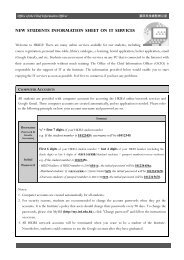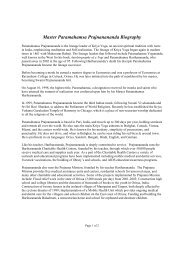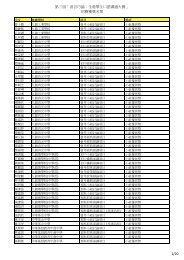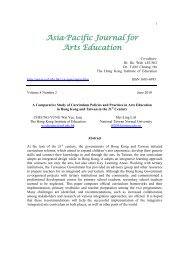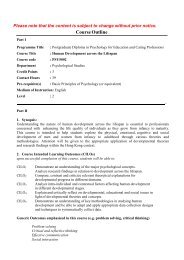Reflection: its concepts and applications in geometry - ResearchGate
Reflection: its concepts and applications in geometry - ResearchGate
Reflection: its concepts and applications in geometry - ResearchGate
Create successful ePaper yourself
Turn your PDF publications into a flip-book with our unique Google optimized e-Paper software.
Asia-Pacific Forum on Science Learn<strong>in</strong>g <strong>and</strong> Teach<strong>in</strong>g, Volume 5, Issue 3, Article 7, p.2 (Dec., 2004)<br />
MAN Yiu Kwong<br />
<strong>Reflection</strong>: <strong>its</strong> <strong>concepts</strong> <strong>and</strong> <strong>applications</strong> <strong>in</strong> <strong>geometry</strong><br />
Def<strong>in</strong>ition: If a transformation f has the property that some fixed l<strong>in</strong>e l is the<br />
perpendicular bisector of the segment PP' for any po<strong>in</strong>t P <strong>in</strong> the plane <strong>and</strong> P' = f(P),<br />
then f is a reflection with respect to l. The l<strong>in</strong>e l is called the l<strong>in</strong>e of reflection.<br />
The po<strong>in</strong>t P' is called the image of reflection of P. The def<strong>in</strong>ition implies that P <strong>and</strong> P'<br />
are located at the opposite sides of l <strong>and</strong> they are equidistant from l. It is a basic<br />
property of reflection. A related concept <strong>in</strong> optics is the law of reflection, which states<br />
that the angle of <strong>in</strong>cidence (the angle between the <strong>in</strong>com<strong>in</strong>g ray <strong>and</strong> the normal to the<br />
reflect<strong>in</strong>g surface) is equal to the angle of reflection (the angle between the outgo<strong>in</strong>g<br />
ray <strong>and</strong> the normal), as illustrated <strong>in</strong> Figure 1.<br />
θ<br />
2<br />
θ<br />
1<br />
θ<br />
1<br />
= θ 2<br />
Figure 1<br />
This phenomenon is due to the Fermat's pr<strong>in</strong>ciple, which states that light pass<strong>in</strong>g<br />
through a homogeneous medium (such as air) follows the shortest distance, <strong>in</strong> order to<br />
m<strong>in</strong>imize energy (see Gay, D., 1998 <strong>and</strong> Hecht, E., 1998). The mathematical reason<br />
beh<strong>in</strong>d this law of optics can be expla<strong>in</strong>ed <strong>in</strong> Figure 2, where D' denotes the image of<br />
reflection of D. S<strong>in</strong>ce the ray of light takes a path so as to m<strong>in</strong>imize the total distance<br />
of travel DE+EC (= D'E+EC), therefore D', E <strong>and</strong> C must be coll<strong>in</strong>ear. Hence, we<br />
have ∠CEA = ∠D'EB =∠DEB <strong>and</strong> so θ 1 = 90 o - ∠DEB = 90 o - ∠CEA = θ 2 .<br />
Copyright (C) 2004 HKIEd APFSLT. Volume 5, Issue 3, Article 7 (Dec., 2004). All Rights Reserved.





